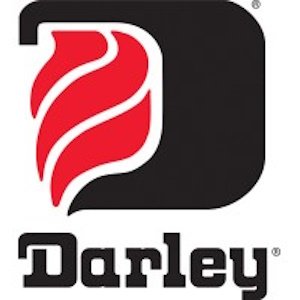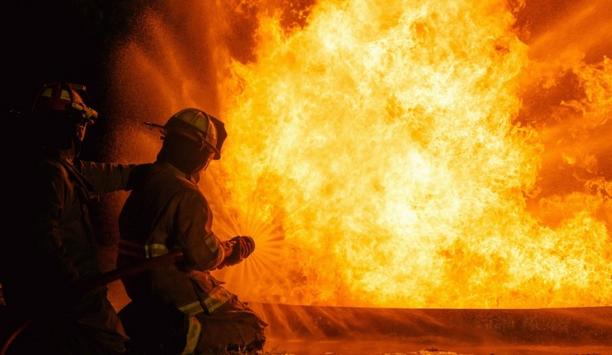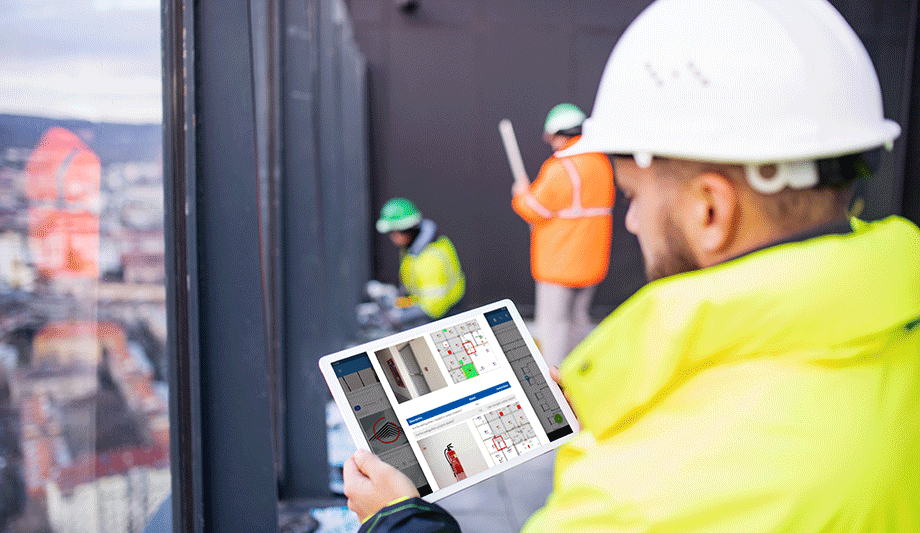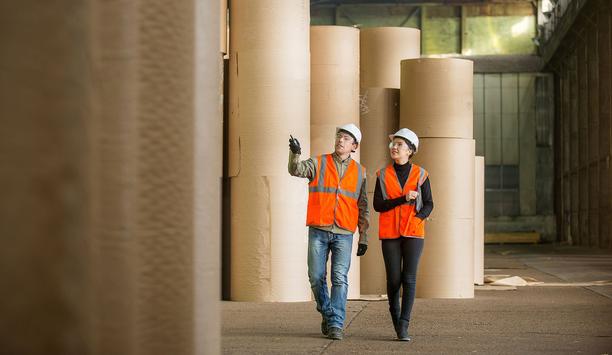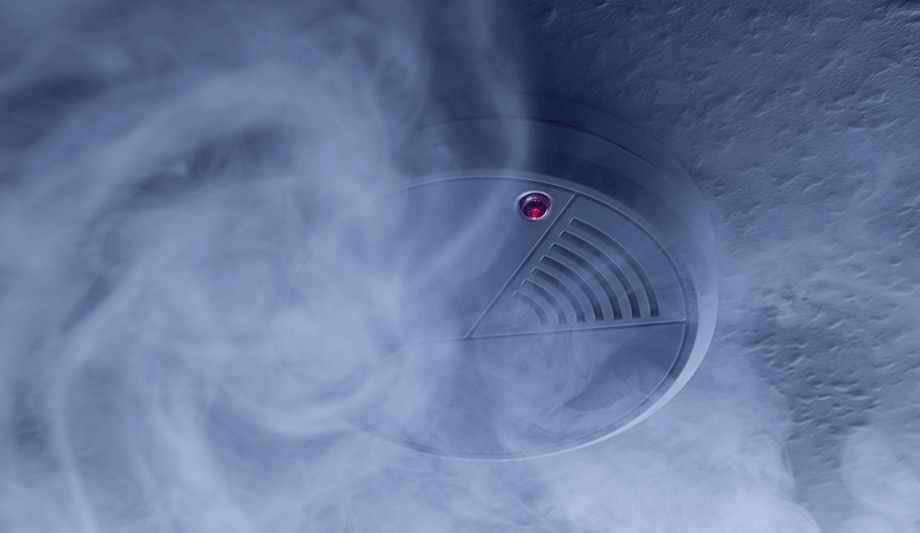Darley - Experts & Thought Leaders
Latest W.S. Darley & Co. news & announcements
Darley, a globally renowned provider of defense, fire, and emergency services equipment, is pleased to announce the appointment of Jim Johnson to its Fire Advisory Board. Jim Johnson brings a wealth of industry experience and expertise in serving the fire industry. Jim Johnson served as President of Pierce Manufacturing from 2010 to 2023. He also served as an Executive Vice President of Oshkosh Corporation and President of Oshkosh's Fire & Emergency business segment with responsibility for the Frontline, Maximetal and Oshkosh Airport Products brands in addition to Pierce. Prior roles of Jim Johnson Most recently, Jim Johnson served as the President of the company's Vocational business segment with the added responsibility for Oshkosh’s refuse vehicles, airport ground support equipment, utility and concrete truck brands in addition to his Fire & Emergency responsibilities before retiring in 2024. Jim started his career in Indianapolis as an attorney practicing commercial litigation. “We are truly honored and proud to have Jim Johnson join our Fire Advisory Board,” said Paul Darley, CEO of Darley, adding “We have been business associates and close friends for almost 20 years. He is a strategic visionary with an eye toward innovation and people. Under his leadership, Pierce grew to be the largest company in the fire industry. Jim’s combination of operational experience, legal mindset, executive presence, sound ethical corporate governance, and industry experience make him an invaluable board member.”
Over 100 representatives from across Illinois’ fire service organizations recently gathered in Glenview, IL, for the Metropolitan Fire Chiefs Association of Illinois’ 19th Annual Fire Services Home Day, held this year at Northeastern Illinois Public Safety Training Academy (NIPSTA.) The fire professionals were joined by elected officials and staffers from several state and federal offices with 20 fire service vendors displaying key equipment used in the fire service. Paul Darley, President and CEO of Darley, a fire and defense equipment supplier in Itasca, IL, founded and co-chairs the annual event with retired Schiller Park Fire Chief Tom Deegan. Items on Display Various equipment and vehicles were on display during the event Various equipment and vehicles were on display during the event and were all purchased through funds from the Assistance to Firefighters Grant during the past 20 years. The events are held to keep fire service issues in front of Illinois’ federal and state legislators. Assistance to Firefighters Grant Program According to the FAMA (Fire Apparatus Manufacturers’ Association) FEMSA (Fire and Emergency Manufacturers and Services Association) Government Affairs Committee, “The Assistance to Firefighters Grant Program was established by Congress in 2001 to assist communities in equipping our nation’s first responders, including firefighters and EMS personnel.” Local fire departments can apply for grants to purchase new and needed equipment to replace older, outdated equipment that no longer meets the safety standards of the National Fire Protection Association (NFPA). Esteemed Speakers Speakers included James Rivera, Illinois State Fire Marshal (OSFM), Chief Chad Hoefle, President, Illinois Fire Chiefs Association (IFCA), Jill Ramaker, Executive Director, Northeastern Illinois Public Safety Training Academy (NIPSTA), Glenn Ericksen, CEO, Mutual Aid Box Alarm System (MABAS), Kevin Lyne , Section Chief, Mutual Aid Box Alarm System (MABAS), Chief Alan Wax, President, Metropolitan Fire Chiefs Association (MFCA), and Jim Keiken, Director, Illinois Fire Service Institute (IFSI). The Assistance to Firefighters Grant (AFG) This grant ensures that firefighters have access to the necessary tools and resources to perform their duties The Assistance to Firefighters Grant (AFG) program fills essential equipment gaps for approximately 1.1 million first responders nationwide. This grant ensures that firefighters have access to the necessary tools and resources to perform their duties effectively and enhance public safety. The significance of the Staffing for Adequate Fire and Emergency Response (SAFER) program was also stressed. This program is crucial for helping fire departments increase or maintain the number of trained frontline firefighters available in their communities. By supporting the SAFER program, the need to ensure that fire departments are adequately staffed to respond to emergencies and protect the public was emphasized. Federal support for local fire departments The reauthorization of the AFG and SAFER Programs ensure continued federal support for local fire departments, helping them maintain safety and emergency response capabilities. Additionally, funding for fiscal year 2025 has been approved for both the U.S. Fire Administration (USFA) and the Urban Search and Rescue Response System (USAR.) The USFA provides critical training for first responders, maintaining a cutting-edge force prepared for various emergencies. The USAR system is vital for disaster response, deploying specialized units to disasters across the country. Authority comment Jim Keiken, Director of the Illinois Fire Service, spoke highly of the opportunities provided to him in being a resource to so many prospective members of the fire service, but to also be recognized as a training resource in the world. Keiken added,”I get the chance to interact with my peers from across the country and to an extent across the world, and what I've seen is second to none in what we do and the way we do it.”
Darley is proud to announce it has been selected as a 2025 US Best Managed Company. Sponsored by Deloitte Private and The Wall Street Journal, the program recognizes outstanding U.S. private companies. The 2025 designees are U.S. private companies that have demonstrated excellence in strategic planning and execution, a commitment to their people, as well as maintaining financial performance and governance. Quality of products and experiences Designees drove their businesses forward, while remaining dedicated to their people Designees drove their businesses forward, while remaining dedicated to their people and focusing on their customers. Advanced technology, including AI took a center role for most of these companies, to create efficiencies and enhance the quality of products and experiences. Team Darley members “W.S. Darley & Co. is extremely honored and humbled to be recognized as one of the Best Managed Companies. This award is particularly meaningful because it is reflective of the dedication, professionalism, and hard work of our entire management team and the dedication of all our Team Darley members over the past 117 years,” said Paul C. Darley, CEO & President. Hallmarks of excellence in four key areas Applicants are evaluated and selected by a panel of external judges focused on assessing hallmarks of excellence in four key areas: strategy, ability to execute, corporate culture and governance/financial performance. They join a global ecosystem of honorees from more than 44 countries recognized by the Best Managed Companies program. About the Best Managed Companies Program The Best Managed Companies program is a mark of excellence for private companies. U.S. designees have revenues of at least $250 million. Hundreds of private companies around the world have competed for this designation in their respective countries through a rigorous and independent process that evaluates four key criteria in their management skills and practices — strategy, execution, culture, and governance/financials. U.S. program sponsors are Deloitte Private and The Wall Street Journal.
Insights & Opinions from thought leaders at Darley
Electric fire vehicles, virtual reality (FR), and firefighting robots are among the new technology innovations in the fire market. They are also among the topics covered in the articles that attracted the most attention (i.e., received the most clicks) at thebigredguide.com in 2022. summary of important issues and technologies Also attracting eyeballs in 2022 were timely issues such as the labor shortage and the ongoing risk of cancer for firefighters. Fire garments were also among the topics in our Top 10 list, as was the importance of lighting at a fire scene. Looking back at the top articles of the year as measured by those that received the most "clicks" provides a decent summary of important issues and technologies in the fire service. Let’s look back at the Top 10 articles posted at thebigredguide.com in 2022 that generated the most page views. Electric Fire Vehicles Gaining Momentum Among Early Adopters More municipalities worldwide are committing to sustainability and climate goals The adoption of electric fire apparatus is accelerating their footprint in the industry. Fire departments from Los Angeles to Madison, Wis., from Portland, Ore., to Mesa, Ariz., have embraced the technology of electric and hybrid vehicles in the fire industry and are demonstrating the practical capabilities of this new generation of technology for the fire service. More municipalities worldwide are committing to sustainability and climate goals. Furthermore, truck producers in general are converting to electric drive systems. Fire Garments Becoming More Comfortable with More Range of Motion Trends in garments and protective gear for firefighters are evolving to address the changing needs of the fire service. Garments worn by firefighters must be comfortable and allow an adequate range of motion. They must protect first responders from hazards such as heat and exposure to bloodborne pathogens. Fire service clothing must be durable to withstand long-term usage in hostile environments. Firefighters have to be kept safe by the best all-around protective fabrics. Fibers must be comfortable, breathable, and safe. Virtual Reality Highlights Dramatic Display of the Benefit of Fire Sprinklers Home Fire Sprinkler Association (HFSA) uses virtual reality (VR) to demonstrate up close and personal the revelatory fire prevention role of home fire sprinklers at the early stages of a fire. A virtual reality video available from HFSA demonstrates how fire spreads in two identical rooms in a single-family home in Ashland City, Tenn. Two rooms were set up as identical living rooms, one with sprinklers and the other without. Both were set on fire. VR video captures dramatic footage, which is viewable in a user-controlled 360-degree video and an immersive experience using VR goggles. Robots Support Firefighters but Are Not Intended to Replace Them As departments get more exposure to firefighting robots and learn more about them, they are more open to using them Firefighting robots have been deployed by a couple of departments in the United States, but the full potential of the technology is being realized. As departments get more exposure to the technology and learn more about the capabilities, they are more open to using them. They are realizing why and how they are being used, and they understand the full capabilities of the technology, not just to spray water, but to clean debris or gain access through a wall. Understanding And Addressing the Cancer Risk Among Firefighters Firefighting is among the riskiest professions, and cancer is one of the biggest related medical risks. Fortunately, research is ongoing to understand the nature of the cancer risk better, new protective equipment and practices are evolving to manage the risk, and support is available for cancer survivors and families. Cancer is the leading cause of death among firefighters, who are at greater risk of some cancers than the public. Hazardous substances in the firefighting environment include dozens of gases, vapors, and particulates, some of the byproducts of burning. Exposure can happen through breathing, in the eyes, on the skin, or through ingestion. FIREX International 2022: Ingenuity from Adversity FIREX International 2022 was bustling with visitors, glad to be back networking, demonstrating new technologies, and sharing ideas. Education was high on the agenda across the three days at London’s Excel, with various live seminars and panel discussion sessions held throughout the show. Seminars covered topics ranging from social sustainability to safety leadership, while the Fire Protection Association (FPA) InfoZone hosted sessions on sprinklers in schools, the safety implications of electronic vehicle fires, and the insurability of timber buildings. Addressing Labor Shortages in the Fire and Rescue Services One factor driving the Great Resignation is the wide availability of new opportunities The Great Resignation has particular consequences in the sphere of fire and rescue services. When it comes to public safety departments, the trend of employees quitting their jobs could become a matter of life and death. One factor driving the Great Resignation is the wide availability of new opportunities in a tight labor market. Another factor is baby boomers nearing retirement age who decide to call it quits. A third is a burnout as employees rethink their priorities and work-life balance in the wake of the global pandemic. Burnout is particularly relevant in the fire and rescue services, where workers were especially challenged during the worst of the pandemic. Darley Promoting Benefits of VR Fire Training; Grant Assistance Available Firefighters must be trained to keep their skills sharp once or twice a year. Providing that training in a safe environment is a challenge, and virtual reality (VR) enables exposure to the experience of firefighting. In 2017, W.S. Darley & Co. first began offering VR training by partnering with virtual reality startup FLAIM, becoming their exclusive distributor in the United States. Currently, Darley has sold VR systems from several manufacturers successfully to medium size fire departments and is on the verge of closing sales to several metro departments by the end of 2022. Red tape in larger departments can slow down the adoption curve. Never-Before-Seen Wildfire Seasons Call for Next Generation Of Wildland Firefighter Protection The concern is growing for wildland-urban interface (WUI) firefighters as fires today frequently intersect with residential areas, in and around wildland fields. WUI firefighters are fighting both wildfires and urban fires. This comes with combined hazards and the clear need for their gear to work harder than ever before. Technology Boosts the Power of Lighting To Ensure Visibility At A Fire Scene Technology has transformed the role of lighting in the realm of firefighting. The rise of USB-rechargeable flashlights and headlamps enables firefighters to recharge on the go. New, multi-fuel flashlight “systems” use a rechargeable battery, but also can accept disposable batteries for alternate sources of power. New scene lights are waterproof and offer powerful brightness in situations involving smoke or water. Work lights that fit in tight spaces can be used hands-free or hanging, and rotate on their bodies for light wherever it’s needed.
Firefighters must be trained once or twice a year to keep their skills sharp. Providing that training in a safe environment is a challenge, and virtual reality (VR) enables exposure to the experience of firefighting. VR training In 2017, W.S. Darley & Co. first began offering VR training by partnering with virtual reality startup FLAIM, becoming their exclusive distributor in the United States. Today, Darley has sold VR systems from several manufacturers successfully to medium size fire departments and is on the verge of closing sales to several metro departments by the end of 2022. Red tape in larger departments can slow down the adoption curve. the benefit of VR training A benefit of VR training is to provide more “sets and reps;” that is, more repetition of important tasks A benefit of VR training is to provide more “sets and reps;” that is, more repetition of important tasks that provide a trainee with “muscle memory” that can kick in during an actual emergency. Real-life training costs thousands of dollars for each firefighter for each event. In contrast, virtual training can be achieved at a rate of $15 or so an hour. real-time response “Virtual reality provides an opportunity to put firefighters in an environment where they can fail safely,” says Kevin Sofen, Business Development Director, W. S. Darley & Co. “After the fact, instructors and students can analyze how effectively they completed the session and discuss the risks of doing something the wrong way. Biometric measures, provided by devices such as heart rate monitors, can analyze a trainee’s real-time response to various fire scenarios.” safety Another argument is safety: Training virtually enables firefighters to avoid contact with possible carcinogens. VR can offset the use of “burn towers,” when stacks of ballets are set on fire. There is no tolerance for injury or death to firefighters during training, and VR helps to keep injuries as close to zero as possible. Grant Assistance Program Grant consultants provide support throughout the process, including researching grants available for first responders Darley provides a Grant Assistance Program to help fire departments buy VR equipment. Darley works with Lexipol to guide fire departments to navigate how they apply to any of the hundreds of local and federal grant programs. The program helps departments find available funding that meets current and long-term training goals. The process can take six to eight months and requires an investment of time by the fire service. Available grant programs include SAFER, AFG, FEMA, and local, state, and private grants. Lexipol grant consultants provide support throughout the process, including researching grants available for first responders, and understanding requirements, timelines, and applications. Simulating response One of Darley’s biggest wins in terms of VR training has been providing systems to the U.S. Air Force, which trains using VRthe to simulate the response to airplane fires without dumping thousands of gallons of foam into the environment, which would be required with real-life training. Darley has also sold VR systems to several community colleges for their fire science programs. It is unlawful to expose someone under 18 years old to an actual fire, so VR helps them prepare for a career later. Fire training For the next generation, which is comfortably exposed to the digital world through gaming and hangout environments, training with VR is a natural fit. For secondary and postsecondary schools, Perkins Grants provide funding to support career and technical education programs. Fire training is just one of the many emerging uses for virtual reality, which first gained traction with Facebook’s purchase of Oculus in 2014. VR products improved around 2017 and 2018, and the cost of the hardware came down in the next couple of years. For the fire service, among other benefits, VR offers a tool for recruitment. VR Applications There are a lot of benefits to come from reevaluating how departments spend money and how training is done When the COVID pandemic hit, more new uses for VR emerged as companies sought ways to train at scale without interacting or having to travel. In the fourth quarter of 2021, Oculus sold a million headset units, priced around $300 each, reflecting the rise in mainstream adoption. An obstacle to replacing live fire with rain with the use of virtual reality is the argument that “we have always done it this way.” However, there are a lot of benefits to come from reevaluating how departments spend money and how training is done. There is a need to get beyond the perception of the fire service as “100 years of tradition unimpeded by progress.” Improve fire training Sofen urges skeptics not to dismiss the technology until they have tried it for themselves in a live and immersive demonstration. “If you see a demo of it, you can see how it can be a useful tool in training,” he says. One of Darley’s VR partners, FLAIM Trainer and Extinguisher, is on a mission to improve fire training, increase the opportunities to train, and support fire departments’ abilities to stay compliant. multi-sensory hardware and software solution The systems provide a fully immersive, multi-sensory hardware and software solution. Six degrees of movement heighten the training experience. Firefighters train on smoke and operate in a (simulated) dense smoke environment with zero visibility. Biometrics tracks firefighters’ responses to various situations and the use of self-contained breathing apparatus (SCBA) hardware promotes a sense of reality. The system seeks to trick a student’s brain into feeling as if they are on an oil field dealing with a levee that is flaring up, for example. interactive and engaging teaching tool RiVR Link and Investigate provide an interactive and engaging teaching tool using 360° video and images Another partner, RiVR Link and Investigate provides a “classroom in a box,” with three degrees of freedom, enabling the student to look left or right, up or down. It is an interactive and engaging teaching tool for classroom education using 360° video and images. The system makes it easy for a fire service to create their content using a 360° camera to capture a scene, then put it into a VR headset. hands-on, real-time simulations A third partner, HazSim Training Simulator, provides first responders and hazmat workers with hands-on, interactive, real-time simulations that mirror dangerous environments and improve the learning experience without the use of dangerous agents. The system simulates any gas meter in an interactive training experience covering how it is used in the field. The trainer uses a tablet and can modify differing CO and methane levels. innovation and support The VR training systems reflect Darley’s dedication to innovation and to supporting the fire service. Some 75% of the company’s revenue comes from products that did not exist for five years. It also expands beyond the company’s traditional reliance on selling equipment to now selling services, software, and subscriptions. After 100 years, Darley will continue to reinvent itself as the market evolves. W.S. Darley & Company has launched a new technology division that will encompass all of the company’s current drone, virtual reality, and training programs while expanding to meet emerging customer needs in the unmanned systems market. The new entity is called the Unmanned Systems, Metaverse & Robotics (USMR) Division.
The New Future For Fire Agencies
DownloadThe Eight Key Trends in Fire Detection in 2023
DownloadA Digital Platform to Improve Fire Safety Compliance and Inspections
DownloadOvercoming the Challenges of Fire Safety in the Paper Industry
DownloadCarbon Monoxide: Creeping Killer Caught In The Act
Download










